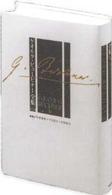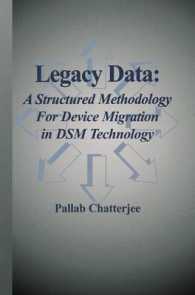Full Description
Make formative assessment work for you—and your math students!
Finally, formative assessment that adds up! Bringing Math Students Into the Formative Assessment Equation is the ultimate resource for helping teachers implement formative assessment in the middle school mathematics classroom.
And it's much more than that. With this research-based, teacher-tested guide, you won't just learn effective teaching strategies—you'll turn your students into self-regulated learners. They'll monitor and assess their own progress—and communicate to you about it! Features include:
A clear and manageable six-aspect instructional model
Detailed strategies for helping students own their successes
Real-life examples from middle school mathematics teachers
Useful resources and a companion website to help you implement formative assessment in your classroom
Formative assessment isn't just for teachers anymore. With the help of this essential resource, you'll work together with your students toward a common goal of math success.
"This book is outstanding. I would recommend it to any math educator. The depth of research integrated into practice is extensive and, as a result, it is the most practical book I have come across related to formative assessment and mathematics The self-regulation aspects, as well as the ownership and involvement emphasized in the book, went beyond the traditional cognitive strategies endorsed in most books."
Marc Simmons, Principal
Ilwaco Middle School, Ocean Beach School District, Long Beach, WA
"The ideas in this book are brought to life with examples of teachers and students in the classroom. The teacher voices, comments, and quotes lend credibility and are a big component of the book's strengths as well as the visuals and graphics."
Rita Tellez, Math Coordinator
Ysleta Independent School District, El Paso, TX
Contents
Chapter 1: Using Formative Assessment to Build Student Engagement in Mathematics Learning
Being a Self-Regulating Learner
Using Formative Assessment Practices to Develop Self-Regulation Skills
Using Formative Assessment in Your Classroom
Teaching Students How to Participate in Formative Assessment
How to Use this Book to Learn What You Want to Learn
Conclusion
Resources
Chapter 2: Using Mathematics Learning Intentions and Success Criteria
What Are Learning Intentions and Success Criteria?
Creating Learning Intentions and Success Criteria for Your Classroom
Conclusion
Resources
Chapter 3: Gathering, Interpreting, and Acting on Evidence
What Is Evidence?
Using Evidence in Your Classroom: The Teacher's Role
The Student's Role and How You Can Develop and Support It
Conclusion
Resources
Chapter 4: Providing and Using Formative Feedback
What Is Formative Feedback?
Using Formative Feedback in Your Classroom
Conclusion
Resources
Chapter 5: Developing Student Ownership and Involvement in Your Students
Student Ownership and Involvement
What Do Students Need to Learn?
Helping Students Develop Ownership and Involvement in Their Mathematics Learning
Self-Regulation: It's Not a Linear Process
Conclusion
Resources
Chapter 6: Using Mathematics Learning Progressions
What Is a Learning Progression?
How Can You Use Learning Progressions in Your Instruction?
Using Learning Progressions to Help Develop Student Ownership and Involvement
Conclusion
Resources
Chapter 7: Establishing a Classroom Environment
Elements of the Classroom Environment
The Social and Cultural Environment: Promoting Intellectual Safety and Curiosity
The Instructional Environment: Framing Instruction to Encourage and Make Visible Students' Thinking and to Optimize Learning
The Physical Environment: Keeping Resources Available
Conclusion
Resources
Chapter 8: Moving Toward Implementation
Implementation Principles for Formative Assessment
Sustaining Your Effort Over the Long Term
Conclusion: Final Words of Encouragement
Resources
Appendix A: Resources
Appendix B: Implementation Indicators for Formative Assessment








